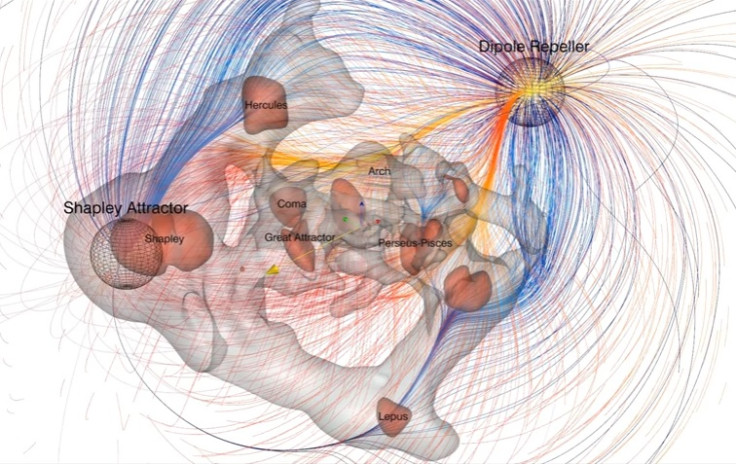An extragalactic void is pushing the Milky Way around the universe
'Dipole repeller' appears to be exerting a force on our Local Group of gravities.
An extragalactic void of nothingness appears to be pushing the Milky Way around the universe. The region, known as the dipole repeller, appears to be acting as a repellent, helping to move our Local Group of galaxies at a speed of around two million km/h.
The existence of the dipole repellar had previously been suggested, with scientists predicting it was working with another force in the universe – the Shapley attractor – to move the Milky Way around. However, the void (largely empty of galaxies) is difficult to observe as it emits little to no light.
Unlike the dipole repeller, the Shapley attractor is a region with a high concentration of galaxies, generating a gravitational pull on the Milky Way. However, the Shapley attractor alone cannot explain the movements of galaxies observed.
In a study published in Nature Astronomy, researchers from Israel, France and the US studied the peculiar velocities of galaxies around the Milky Way and combined them with analysis of their properties. This allowed them to work out the movements of our Local Group of galaxies to establish the cause of the observed flow.

Their findings showed galaxies are being pushed away from the dipole repeller almost as much as they are being pulled towards the Shapley attractor. Together, the two objects dominate the Milky Way's trajectory around the universe.
"It was suggested a decade ago that an underdensity in the northern hemisphere roughly 15,000 km/s away contributes significantly to the observed flow," the team wrote. "We show here that repulsion from an under-density is important and that the dominant influences causing the observed flow are a single attractor — associated with the Shapley concentration — and a single previously unidentified repeller, which contribute roughly equally to the cosmic microwave background dipole.
"Here, the source of the repulsion is identified for the first time. The dual dominance of the dipole repeller and the Shapley attractor is the main new finding of this study."

© Copyright IBTimes 2024. All rights reserved.







